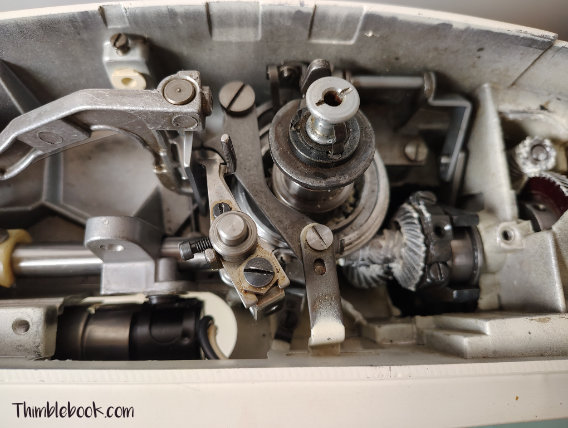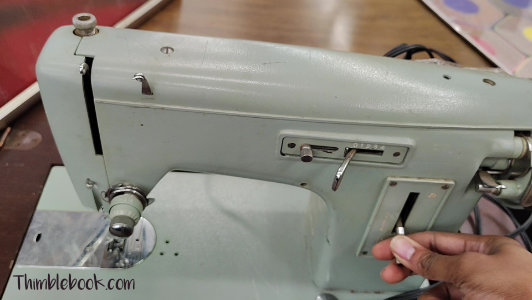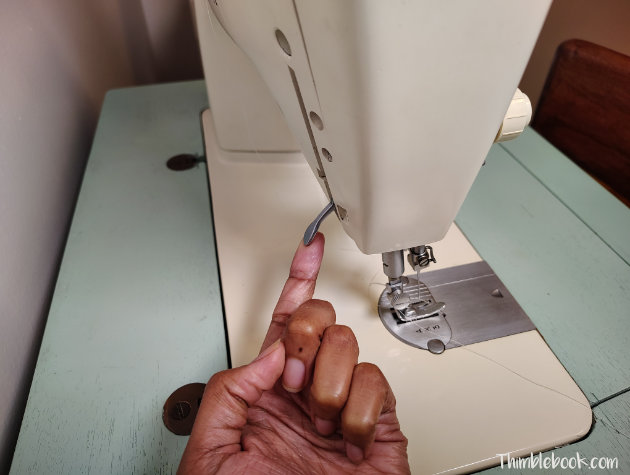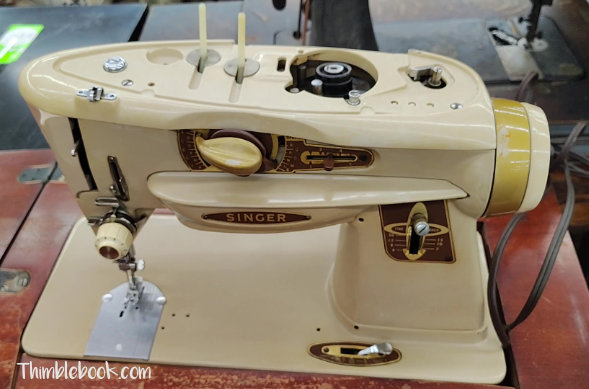The Secret to What Vintage Sewing Machine Buyers Look For
*This post may include affiliate links, which allow me to make a small commission off your purchases. The money is earned at no additional cost to you.
99.9% of vintage sewing machine buyers are experts who love sewing. So, if you know very little about sewing machines, have a vintage one you’d like to sell, or find yourself in the market for a new vintage machine, keep reading. The first question non-experts ask is always…
“Is my sewing machine valuable?”
Antiques collectors love rare items, but vintage sewing machines aren’t rare because everyone used to have one. The lack of rarity means, 90% of the time, you won’t get over $500 out of any machine. In the USA, there are a few models that demand more money because of their popularity. These models include:
- Singer Featherweight (any metal model especially crinkle finish or free arm versions)
- Bernina Record 900 or 1000 series machines
Vintage sewing machine buyers look for 7 main things when they are shopping. They are looking for a sewing machine with:

1) All metal parts
Internal Gears
No sewing machine expert wants a sewing machine with nylon gears unless it came from Bernina. Even then, nylon gears are still a no-go. Since nylon gears wear out, vintage sewing machine buyers search for older machines that were made to last forever.
Sellers: It is a great idea to take photos of the inside of your machine to display the all metal construction. Once you do that, your machine will sell much faster.
Buyers: Always look up your sewing machine online before buying. Can’t find your sewing machine online? Check out my previous blog, “ What to Do When You Can’t Find Data on Your Vintage Sewing Machine” to get tips on how to learn more about your machine before making a purchase.
Exterior
In addition to searching for all metal internal parts, vintage sewing machine buyers want a machine with an all metal exterior. Metal construction means the sewing machine will be solid and unlikely to bounce around when sewing thru thick materials. This feature is most appealing to quilters, bag makers, or those who work with upholstery fabrics.
While you do want an all metal sewing machine, it is important for the machine to not be too heavy. Many of the older machines weight 30 pounds are more. Heavier home sewing machines don’t have as much resale value because they are harder to move. Instead, vintage sewing machine collectors often prefer aluminum bodied machines because of their lightweight and durable construction.
2) Hand wheel cooperation
I understand many purchase machines online. However, it is always best to make a purchase in person. When you are in person, turn the hand wheel towards you to see if there is any movement from the need bar and feed dogs. There are only three possible outcomes to this action:
- Full movement of the needle bar and feed dogs without resistance.
- Needle bar and feed dog movement with a little resistance.
- No movement at all.
In a best case scenario, you’ve got full movement on the needle bar without a problem. This means the machine was well oiled and maintained. On a machine with a little resistance, it means the unit was left sitting without oil. 90% of the time, you can add a few drops of oil and get the machine back moving freely. But when there is no movement at all, you’ll know there is a problem with the sewing machine. You can either pass on this sewing machine or commit to figuring out the problem.
3) Wiring
Always look at wiring on a sewing machine to see if there are any cracks or problems present. When there are problems with wiring, it isn’t an automatic deal breaker. It isn’t a deal breaker because wiring can easily be replaced with new wiring of the same gauge. At the same time, wiring takes time to redo.

4) Buttons & Dials Working
Try turning the dials and buttons to see how they work. Over the years, I’ve had subscribers contact me because their stitch selector dial wouldn’t change the stitch type. This is caused by a stuck zigzag needle bar and/or stuck cam stack. It takes more than oil to fix this problem. So, know this before making a purchase.

5) Presser bar In tact
When presser foot on a vintage sewing machine is raised, it is a red flag. It is a warning symbol because a raised presser foot causes the spring to wear out. The spring is replaceable. But, it isn’t easy to find the correct presser bar spring replacement.
6) Accessories
Since presser feet, a foot control, and needles are easily replaceable, they aren’t a must have for sewing machines. However, there are models where missing accessories are a big deal.
Costs
Due to costs, missing Bernina accessories are a total deal breaker unless there is a significant discount offered. For example, Bernina 1010 has an expensive foot control that costs over $100. Likewise, Bernina old style presser feet aren’t cheap ranging between $30- $80 a piece.
Here’s the links to presser feet for common vintage machine shank types:
Rarity
Costs isn’t the only reason why accessories are important. In addition to considering costs of replacement accessories, you have to consider availability. For example, Kenmore super high shank presser feet are becoming less available in the second hand market. While there are adapters available to use with snap on feet, they are a less than perfect fit. For this reason, it is important to have rare or hard to find accessories with your machine.
Manual
The manual, even 50 years after the sewing machine was made, remains very important. The guidebook has everything you need to know about how to thread and operate the machine. When the manual isn’t present, look online for a PDF copy. When there is no online PDF or physical manual available, it isn’t a deal breaker. However, there should be a discount applied to any machine with no manual available.
Storage
Vintage sewing machines most often come stored in a table. Tables make it easy to sew. However, a vintage sewing machine tends to be in much better condition when the owner housed it in a carrying case. For this reason, seasoned vintage sewing machine collectors search for machines in a carrying case. However, it isn’t a deal breaker for a sewing machine to come without this accessory.

7) You need all the original parts
You would be surprised how many times sellers want full price for machines with missing top or side covers. The all metal pieces don’t effect functionality. However, missing pieces make the sewing machine look like an unfinished building. In addition, these missing components allow dust and debris to enter important parts of the machine. It is possible to get a vintage machine with missing main parts and to search eBay or Goodwill online for a for parts machine. But, it takes months to find a for parts machine. For this reason, it makes more sense to pass on machine with missing parts.
Originally posted March 2018 & Last Updated October 2025
Other Helpful Articles:
What to Do When You Can’t Find Data on Your Vintage Sewing Machine
3 Comments
Leave a response

Thank you for you article.
Thank you. I am glad that the article was of assistance.
140g pedal singer in excellent condition rarely used one owner